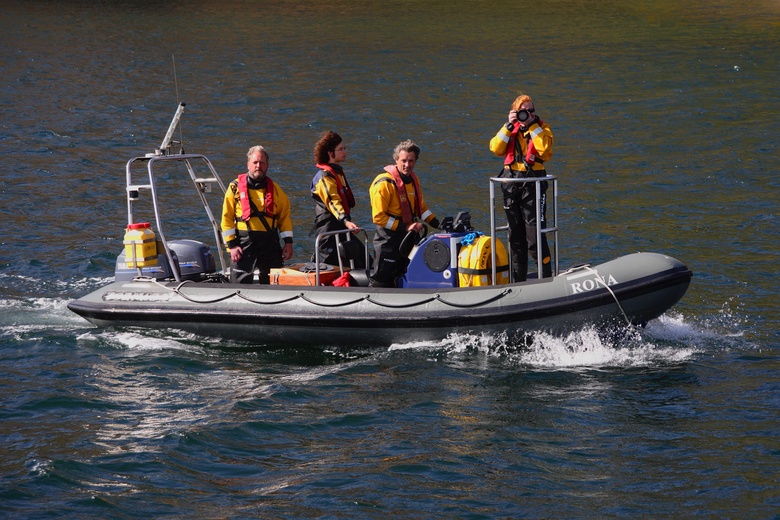
This work is based upon repeat observations of individually recognisable dolphins, providing data for a range of studies on abundance, reproduction, survival, social structure and even epidemiology. These studies have been complemented by land-based and passive acoustic studies centred around the tidal narrows within the inner Moray Firth.
A key aim of our work is to support conservation programmes for this and other coastal dolphin populations. The Moray Firth Special Area of Conservation was designated to protect bottlenose dolphins, and the University of Aberdeen is contracted by NatureScot to make regular status assessments as part of the UK's Natura 2000 monitoring programme.
Example studies
Cheney, B.J., Thompson, P.M. & Cordes, L.S. (2019) Increasing trends in fecundity and calf survival of bottlenose dolphins in a marine protected area. Scientific Reports, 9.
Fernandez-Betelu, O., Graham, I.M., Brookes, K.L., Cheney, B.J., Barton, T.R., Thompson, P.M. (2021) Far-field effects of impulsive noise on coastal bottlenose dolphins. Frontiers in Marine Science 8
And you can check out the video to see an example of how we match the changing nicks and tooth rakes of dolphins through time.
